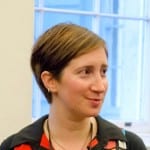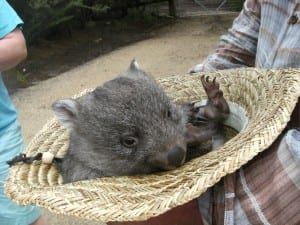Why Talk to Engagers?
By Stacy Hackner, on 9 February 2015
Most of my engagements, regardless of the museum, are quite short. Visitors ask a few questions, I talk theirs ears off about bones and Nubians for about ten minutes, we banter, and then they leave. It’s not their fault or, I hope, mine; I know people have places to go and didn’t schedule in the requisite half hour an over-enthusiastic archaeologist needs to fully explain the intricacies of bone cells, astronauts exercising in space, perceptions of Egyptian hegemony, and working within the Human Tissue Act. Occasionally, though, I happen upon that rare individual or group who is/are both fascinated and unfettered by a strict schedule of museum tourism. These engagements can last anywhere from 30 minutes to two hours and, while intellectually exhausting, really accomplish the Student Engagers’ goals of learning just as much from the public as they do from us. Once people learn that they are not bothering us and that our work is simply to discuss research with them, the museum turns into a salon of ideas and facts.
Beyond my PhD work, I consider myself a perpetual student. I’m always learning, reading, interpreting, evaluating data from numerous sources. I’m actually a little afraid of graduating and not being able to call myself a student, as I plan to continue learning despite my future job title, whatever it may be. Engaging with such fascinating people gives me hope that I’ll be able to continue learning from the general public (almost total strangers) because we live in world with really interesting people who are full of knowledge and eager to share. I’d like to describe a few of my best engagement sessions over the past two years.
In the Grant, I met a gentleman dressed in 100% vintage 60s rocker garb, including a fantastically feathered hat. After I introduced myself, he identified my American accent and asked where I was from. I said Chicago. “Chicago!” He exclaimed. “I love it there – I went to film Wayne’s World.” He worked in the music business and was a “band member” in the movie. We talked about the music scene and Chicago museums and the doubtful art of identifying skeletal remains of musicians by extra bone on their fingers. I feel like I got a unique insight into the London music scene in the 70s and 80s, which I love to listen to but have never considered ethnographically. A year later, I saw him again and he recognised me.
In the Petrie, I met an American woman with two children. The kids, age 11 and 13, wanted to know all about mummies. I feed off others’ enthusiasm, especially kids’, since everything is new and amazing to them. The older boy had been studying ancient cultures in school and we had a great time talking about what counts as “history”. They were also interested in the hieroglyph charts, which I explained isn’t a one-to-one correlation with English letters, but ideographic symbols: for instance, if you spell the name Max, you need to put a little drawing of a boy next to it to symbolize that it’s the boy called Max. Otherwise it could represent the maximum amount or, with a king sign, the Pharaoh Max. When the kids went on a Petrie trail, I learned that both their parents are film producers in town for a shoot.
Only a few weeks ago in the Grant, I met a couple who can only be described as vociferous enthusiasts of the natural world. The lady, originally from Tasmania, used to foster wombats and bandicoots; from her I learned of a number of marsupials (or macropods), all new to me, as well as the natural history of Tasmania. Did you know there are two types of koalas? And one of the smallest marsupials, the potoroo, was also unknown to me; there were four species, three of which are endangered and one of which is extinct. Her companion is a fish epidemiologist – probably the only career that gets more raised eyebrows outside the scientific community than bioarchaeologist – and studies infectious disease of fish. What infects fish, I asked? Many things! Fish can get parasites and viruses just like humans; bereft of an example of waterborne bacteria, he pointed out cholera, the obvious example. This couple comes down to London from Scotland every few months to enjoy its dual pleasures of natural history museums and dim sum, which tie together quite nicely considering the unusual species found in both. I was totally enthralled, and felt like I’d just had a lesson in the best mixture of history and old-fashioned naturalism and bacteriology.
Really, museums are not just places for learning: they are the center of an exchange of ideas. Whether that involves looking at old things in new ways, new things in old ways, or opening someone’s eyes to a totally different perspective, I really appreciate my interactions with visitors. Please come down to the museums and talk to the Engagers – we’d love to be enlightened!
One Response to “Why Talk to Engagers?”
- 1
 Close
Close




Fascinating. I never realized how much docents / engages enjoy being enjoyed. I thought I was bothering them. You I’ll be a great teacher someday.